This week features many insects that are so small they’re overlooked by nearly everyone – except, of course, by avid bug enthusiasts. From minuscule parasitoid beetles to the tiniest assassin you’ll ever see, the diversity of the smallest among us is intriguing but not at all surprising. It’s hard to ignore the large, charismatic things buzzing around, but this week’s submissions show that taking a moment to observe even the tiniest specks is worth the investigation.

Giant Water Bug
Lethocerus americanus
At up to about 3 inches, these true bugs are truly giant. Commonly called “toe biters,” they possess piercing and sucking mouthparts and can deliver a painful poke. They generally live in stagnant, slow-moving waters, capturing and consuming other insects, small fish, frogs, and even snakes. Aside from finding them in the water, they are attracted to lights at night… which means, yes, they can fly.
Collin Brown, August 6th, 2023. Missoula, MT.
Cutworm Wasp
Podalonia sp.
Cutworm wasps are widespread parasitoids who prey on caterpillars in the family Noctuidae. The female wasp hunts for an appropriate caterpillar to supply her offspring; she then burrows into the sand to construct her brood chamber and lays an egg on her prey. When her larvae hatch, they feed off the caterpillar until they are large enough to pupate. Cutworm wasps are found across North America, Eurasia and Africa.
Brenna Shea, August 8th, 2023. Missoula, MT.
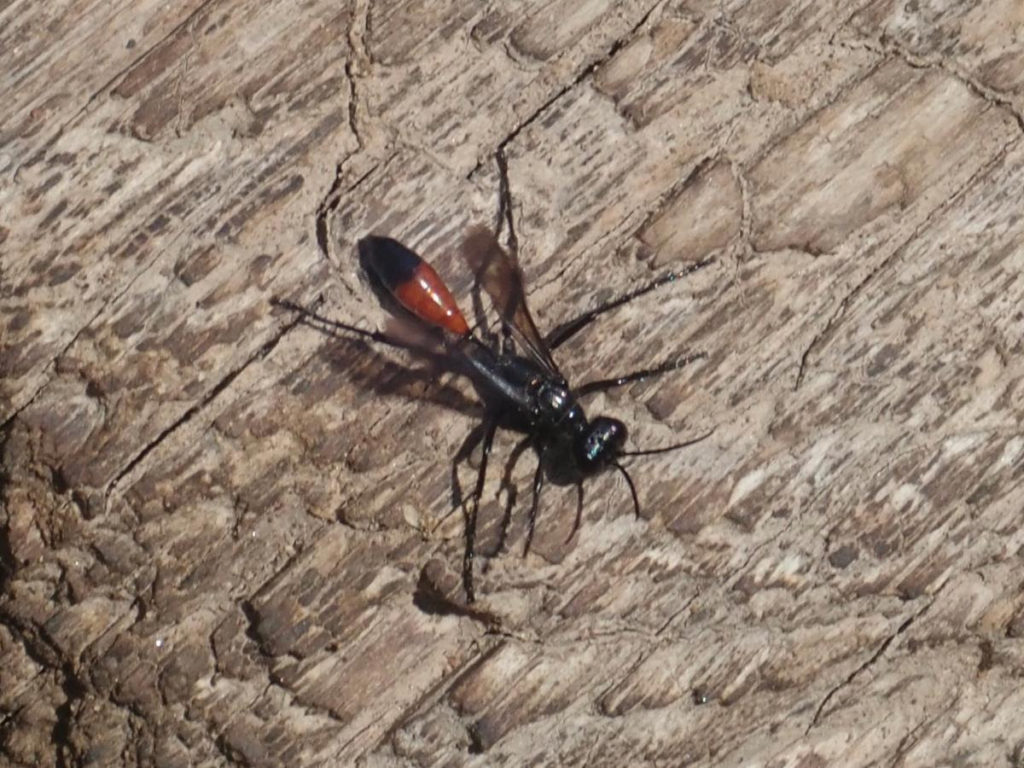
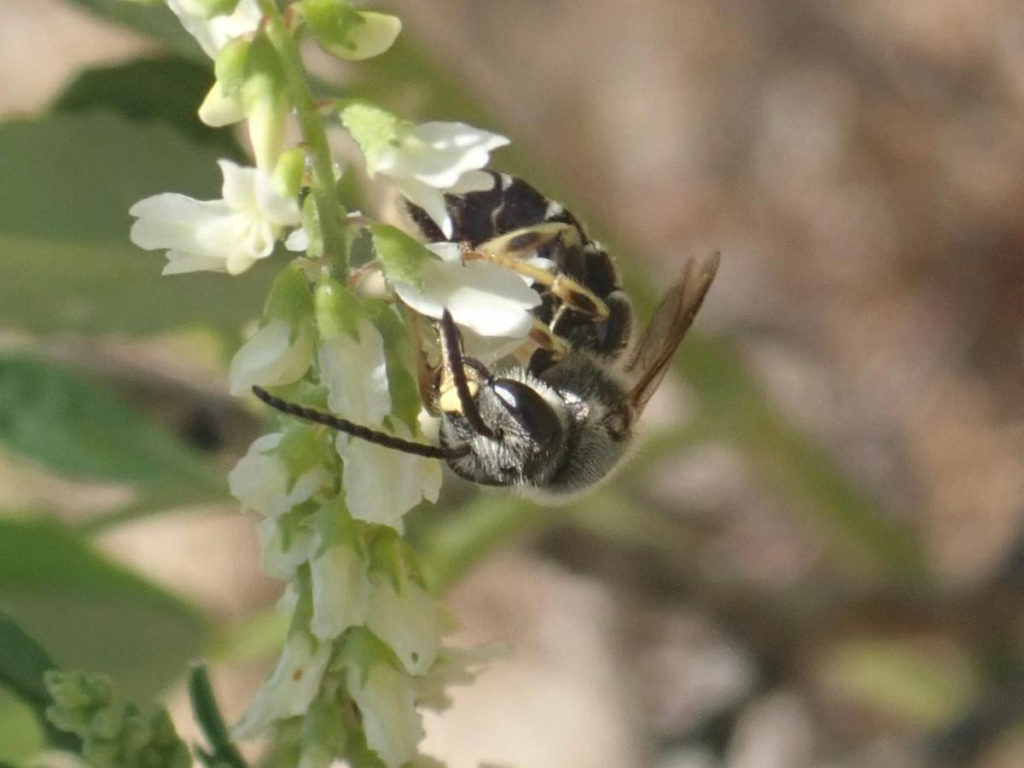
Wide-striped Sweat Bee
Halictus farinosus
Many species of furrow bees in the genus Halictus are eusocial (living in cooperative colonies), but the wide-striped sweat bee is considered primitively eusocial compared to other species in the genus. Their range is limited to the west coast and the Rocky Mountains. Like most sweat and furrow bees, they are docile and will only sting if they are repeatedly harassed.
Brenna Shea, August 8th, 2023. Missoula, MT.
Thin-Legged Wolf Spider
Pardosa sp.
Some of the largest spiders encountered in Montana are wolf spiders. Wolf spider mothers attach their egg sacs to their spinnerets and carry on with normal life. After the spiderlings emerge, they clamber onto their mother’s back and remain there for up to two weeks or more, until they are ready to be on their own. Wolf spiders are fast, ground-dwelling hunters that chase down their prey. Many species live in burrows.
Brenna Shea, August 8th, 2023. Missoula, MT.
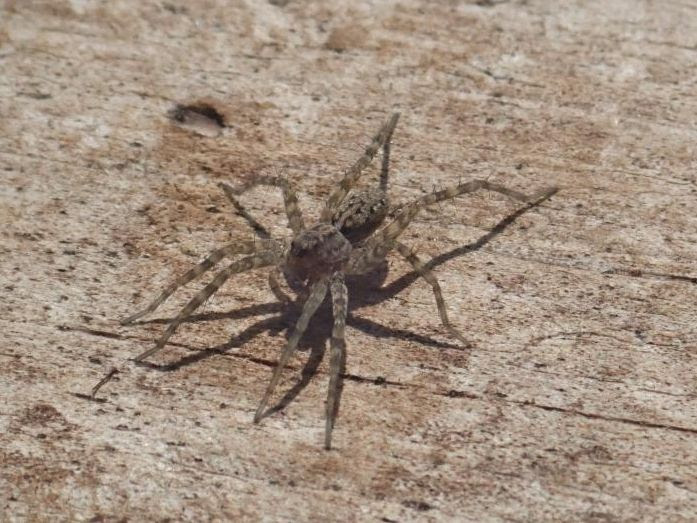
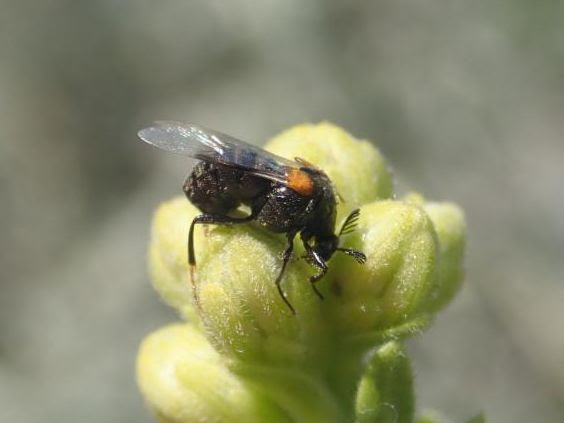
Wedge-shaped Beetle
Ripiphorus sp.
Female beetles in this genus lay their eggs on flower buds; when her larvae hatch, they hitch a ride on ground-nesting bees. The bees inadvertently take the beetle larvae back to their underground nests, where the larvae feed on developing bees. Like many parasitoid wasps, the beetle larvae initially feed internally, then emerge from the developing bee and feed on them externally. Adults are short-lived, with males sometimes only living for a single day.
Brenna Shea, August 8th, 2023. Missoula, MT.
Bald-faced Hornet
Dolichovespula maculata
Despite their common name, D. maculata is a species of yellowjacket, not a hornet. They are omnivorous and considered beneficial due to their predation of flies, caterpillars, and spiders. However, don’t get too close to an active nest. They aggressively defend their colony and can sting repeatedly. They also have the unique ability to squirt or spray venom from their stinger into the eyes of nest intruders, causing immediate watering of the eyes and temporary blindness.
Brenna Shea, August 3rd, 2023. Missoula, MT.
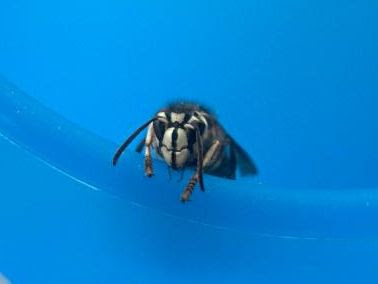
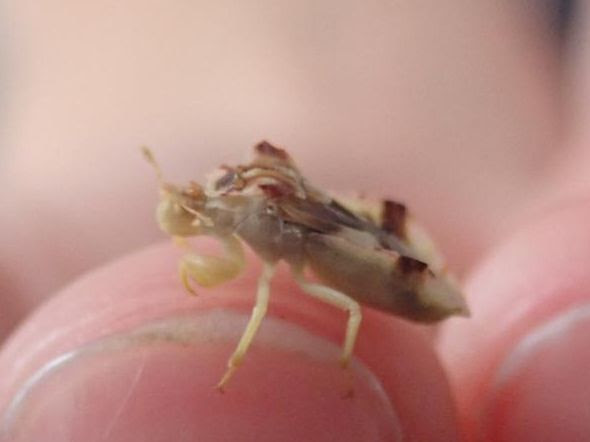
Jagged Ambush Bug
Phymata sp.
Ambush bugs are minuscule assassins. You’ll notice the forelegs are thick and shaped like those of a praying mantis — perfect for grabbing and holding prey. In the same family as assassin bugs (Reduviidae), they have a beak-like proboscis used to stab prey, inject venom, and inject enzymes to break down the prey into “bug soup” that they can then drink up.
Nicole Emlen, August 8th, 2023. Missoula, MT.
Woodland Skipper
Ochlodes sylvanoides
These small, tawny orange butterflies start to emerge in mid to late summer and can be found in just about any habitat; including sagebrush, woodland clearings, gardens, and small streams. Woodland skippers can be found from British Columbia south to southern California; east to Montana, Colorado, and Arizona.
Brenna Shea, August 8th, 2023. Missoula, MT.
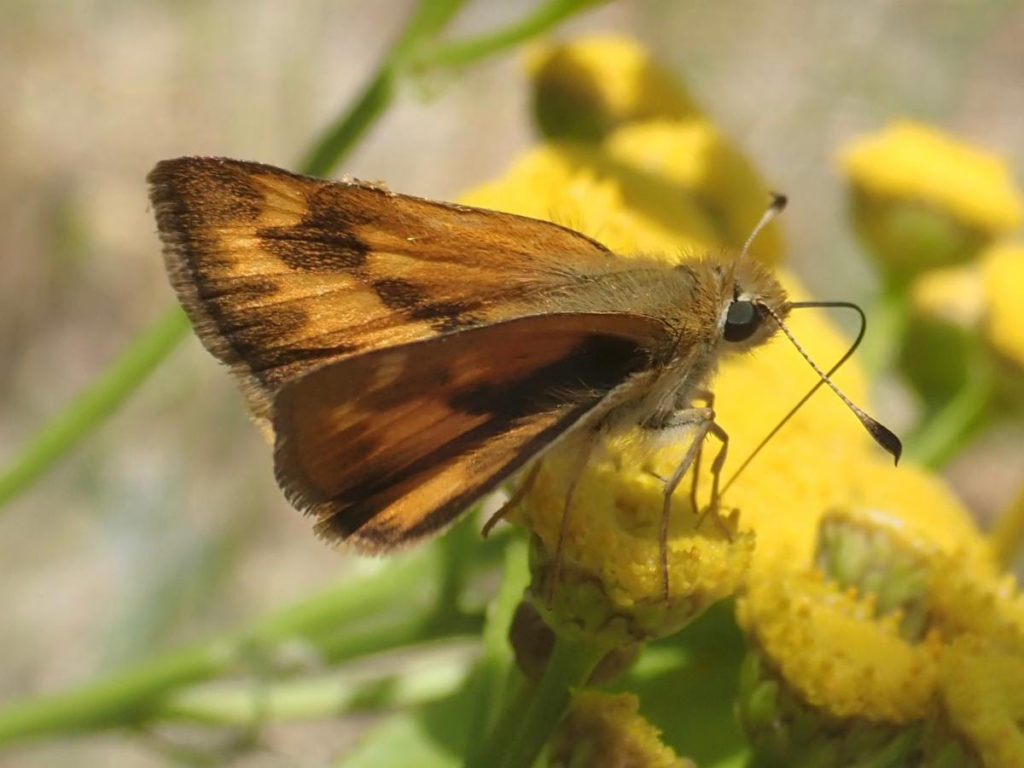
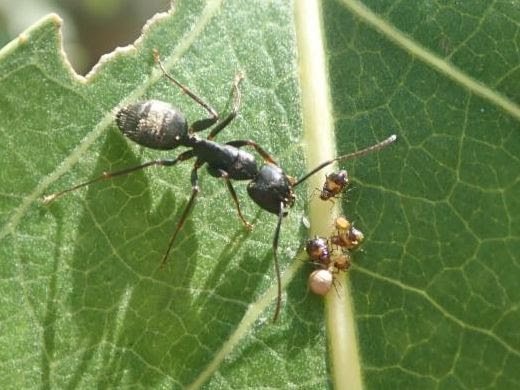
Carpenter Ant & Aphids
Camponotus sp.
Carpenter ants are a diverse group of large, formidable-looking ants with a reputation for excavating dying trees and wooden structures for their nests. While they are predators and scavengers, they also have a sweet tooth. This ant is tending her aphid flock; she gently encourages her aphids to excrete a sweet substance known as “honeydew,” which she eagerly consumes for a sugar boost. Carpenter ants are widespread; over 1,000 species are found on every continent (except Antarctica).
Brenna Shea, August 8th, 2023. Missoula, MT.
Hunt’s Bumble Bee
Bombus huntii
This handsome bumble is found across Western North America, east to Manitoba, and south to Central Mexico. In her northern climes, she is found in desert scrub habitats, prairies, and meadows. In her southern range, she is found in high-elevation pine forests, including those near the peaks of volcanoes. Like many bee species, Hunt’s Bumble Bee has experienced some population decline, but it is still one of the more common species encountered in this region.
Brenna Shea, August 8th, 2023. Missoula, MT.
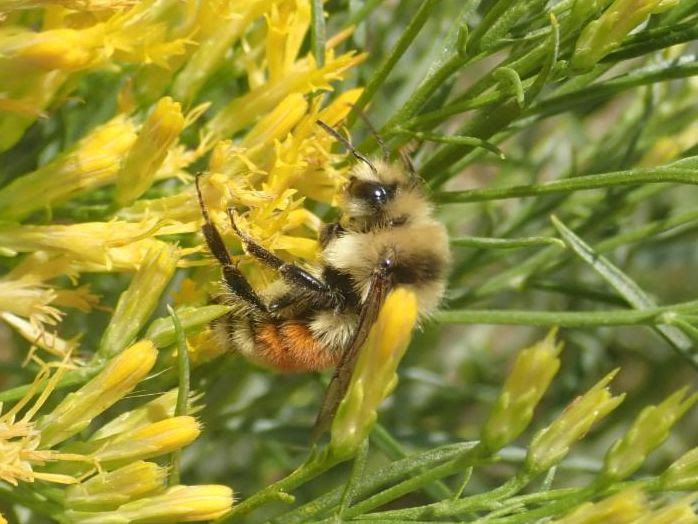
Header Photo: Hunt’s Bumble Bee (Bombus huntii) and Woodland Skipper (Ochlodes sylvanoides) Brenna Shea, August 8th, 2023. Missoula, MT.